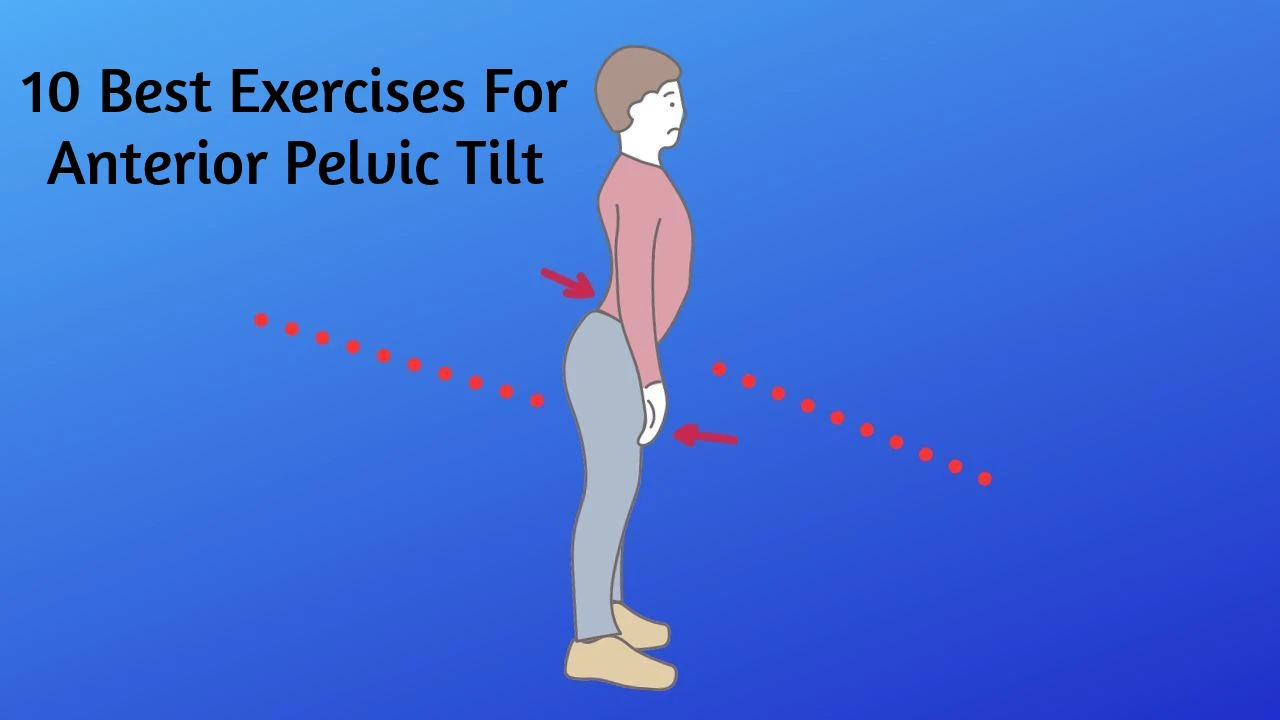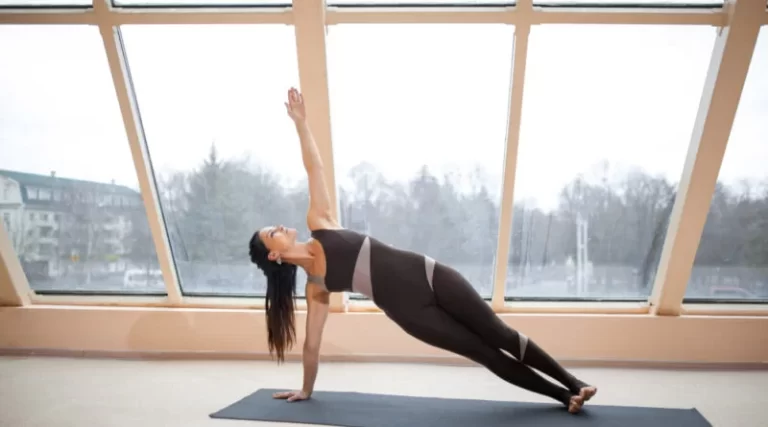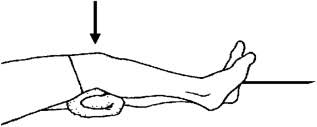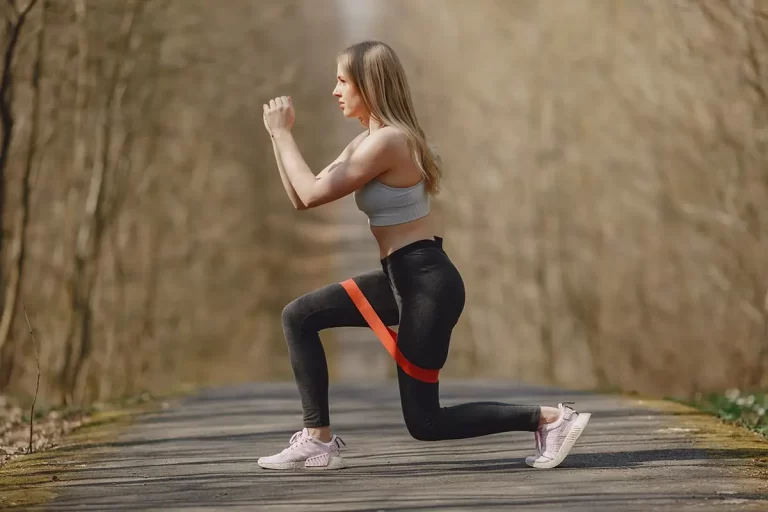10 Best Exercises For Anterior Pelvic Tilt
Introduction
Anterior pelvic tilt (APT) is a postural misalignment characterized by the forward rotation of the pelvis, tilting it anteriorly and causing an exaggerated curvature of the lower spine.
Anterior pelvic tilt (APT) is a postural misalignment characterized by the forward rotation of the pelvis, tilting it anteriorly and causing an exaggerated curvature of the lower spine.
Exercises for anterior pelvic tilt are crucial treatment options that focus on strengthening weak muscles and stretching tight muscles. This approach aims to address the muscular imbalances associated with anterior pelvic tilt, promoting a more balanced and neutral pelvic alignment.
Strengthening exercises typically target the weakened muscles, such as the core and gluteal muscles, while stretching exercises focus on the tight muscles, particularly the hip flexors and lower back muscles.
This comprehensive approach helps restore proper muscle length-tension relationships and improve overall posture, alleviating discomfort and preventing further issues associated with anterior pelvic tilt.
What is an Anterior Pelvic Tilt?
- A forward-tilted or rotated pelvis is referred to as having an anterior pelvic tilt in clinical terms. Like your mother used to do when she was upset with you, place your hands on your hips. Under your index fingers, can you feel those bony ridges? Your iliac crests are those, and you most likely have APT if they are oriented more downward than forward.
- Usually, it occurs when your hamstrings and glutes are too weak to oppose the forward tugging caused by your taut hip flexors, which pull your pelvis downward. Long stretches of sitting and frequent wear of high heels, which both contribute to short, taut hip flexors, as well as weak glutes, hamstrings, and core muscles, can all lead to anterior pelvic tilt back discomfort.
- APT makes the lower back’s lordosis, or curve, more pronounced. The hip flexors may seem particularly tight. That may lead to several issues for you. Treating anterior pelvic tilt can have some long-term effects, as it usually affects the lower back at the lowest two levels, L4-5 and L5-S1.
- The lowest lumbar discs may make you more susceptible to disc problems. This can include disc bulges and herniations, disc rips (sometimes called annular tears), and compressed degenerative discs.
- For this reason, it’s advisable to see your physician before trying to correct anterior pelvic tilt.
- An anterior pelvic tilt can be corrected using a variety of activities.
- It is always advisable to see a healthcare provider before starting any new fitness regimen. Anterior pelvic tilt refers to a forward tilt or rotation of the pelvis, which comprises the hip and pubic bones.
- This happens as a result of an imbalance in the lower body’s muscles.
- A mix of weak and tight muscles pulls the pelvis forward.
- Your pelvis facilitates running, walking, and lifting objects off the ground.
- It also helps maintain good posture. An anterior pelvic tilt is when your pelvis is moved forward, which forces your spine to curve.
- It’s frequently brought on by prolonged sitting without adequate movement or stretching to offset the negative consequences of sitting all day.
You might notice that the muscles in your front thighs and pelvis are tight and the muscles in your back are weak if you have an anterior pelvic tilt. It’s also possible that your abs and gluteus are weak. All of this may result in:
The following tense, hyperactive muscles could be a factor in anterior pelvic tilt:
- hip flexors, which are the little muscles in the front groin region, and the quadriceps group, which makes up the front thigh muscles
The following list of weak, underactive muscles might result in this condition:
- The muscles in the buttocks are called the gluteus group; the muscles at the back of the leg are called the hamstring group; and the lower abdominals are called the rectus abdominis.
- A person with an anterior pelvic tilt frequently has a noticeable buttock protrusion and an accentuated lower back arch.
- Fortunately, you can assist your pelvis in returning to a pain-free neutral position by performing a few exercises at home.
10 Best Exercises For Anterior Pelvic Tilt
Following are the best exercises for anterior pelvic tilt
Thomas test
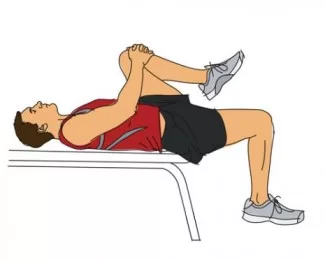
Steps To Follow:
- Take a seat on a strong table’s edge.
- With your legs hanging off the table at the knees, lie back on the surface.
- Draw one leg towards you, bending it until it touches your chest while gripping beneath your knee.
- Continue with the opposite leg.
When you get into this position, the back of your resting leg should touch the table if your pelvis is correctly positioned. Your front thigh muscles are tense if you have to swivel your hip or leg or stretch your resting leg in order to touch the table. This most certainly indicates a pelvic tilt.
Posterior pelvic tilt
Steps To Follow:
- With your feet hip-width apart and your knees bent, lie flat on your back.
- Squeeze your rear end and raise your pelvis.
- It should feel like the back is settling into the earth. The back can be pushed down with the aid of the abdominal muscles.
- Resuming your regular pelvic position
- Ten to twelve times over.
Standing up and performing this exercise helps improve pelvic mobility and activate the muscles in the buttocks.
Tail Tuck
Steps To Follow:
- Try to figuratively tuck in your phantom tail by tilting your tailbone forward.
- You may perform 10–12 repetitions of this up to three times.
Kneeling quadriceps stretch
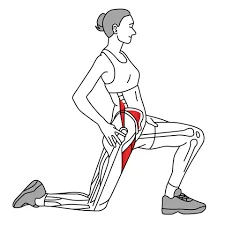
The quadriceps muscles are overly tense and active in an individual with anterior pelvic tilt. To stop these muscles from dragging on the pelvis, try to extend them. Stretching this way will also help to extend your hip flexors.
Steps To Follow:
- Get down on your knees.
- Leaning forward, bend the left knee and place the left foot firmly on the ground.
- The front leg should be 90 degrees from the shin and parallel to the floor.
- Squeeze the muscles in your buttocks, then drive your pelvis forward.
- Holding for 30 seconds
- repeat on the other side.
Lean further into the stretch to focus more on the hip flexors. Making an effort to tuck in the pelvis is crucial.
This stretch mostly affects the hip flexors and quadriceps muscles in an individual.
Standing quadriceps stretch
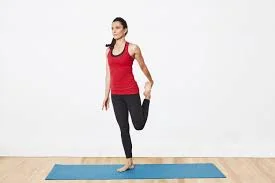
Steps To Follow:
- Straighten your back, bend your left knee, and grasp your ankle or foot from behind.
- As close to the buttocks as you can without getting uncomfortable, pull the ankle.
- Tuck in your pelvis by tightening your buttocks and abdominal muscles.
- Holding for 30 seconds
- repeat on the other side.
Thinking about pushing the knee toward the floor can help a person feel the stretch more intensely.
Squats
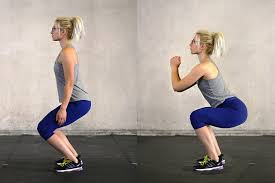
The gluteus group is strengthened by this workout. When standing, it is essential to concentrate on tightening the buttocks.
Steps To Follow:
- With your feet hip-width apart and your posture straight, point your toes forward.
- While maintaining a lofty torso, drop the body into a sitting position by pressing your buttocks back.
- The thighs should be parallel to the ground.
- Push yourself up to a standing position while squeezing your buttocks and tucking your pelvis slightly.
- Do this 12–15 times.
Plank

This workout will enhance core strength. The abdominals need to stay contracted and drawn in towards the spine. The body can also be maintained by clenching the buttocks.
Steps To Follow:
- Beginning on all fours, extend the legs straight back, supporting their weight with the toes.
- The forearms and elbows should support the remaining body weight. Now the body ought to be in a single, long queue.
- The hips and shoulders shouldn’t be in relation to one another.
- Squeeze the abdominals and the buttocks to properly hold the plank. Developing the abdominals could be aided by slightly tucking the pelvis.
- For 30 to 60 seconds, hold.
Kneeling leg lift with back stretch

This exercise can help you stretch your back and gluteus muscles while also helping to tighten your abdominals.
Steps To Follow:
- On your hands and knees, descend.
- Spread your hands shoulder-width apart on the ground. Ensure your hips and knees are in line.
- In order to maintain a neutral pelvic position, make sure your back is parallel to the floor.
- As you release the breath, draw your belly button in towards your spine and arch your back.
- After two seconds of holding, return your spine to its neutral position.
- Lift one leg back until it is at the same height as your torso, extending it sufficiently to align your raised leg with your body. Maintain a neutral posture for your spine.
- Repeat up to ten times by lowering the leg after holding this position for up to five seconds.
- Change your legs.
Bridge

This exercise will relax the hip flexors and strengthen the gluteus and abdominal muscles.
Steps To Follow:
- With your feet hip-width apart and your knees bent, lie flat on your back
- As you tuck your pelvis towards the sky, squeeze your buttocks.
- When the back is off the ground, roll upward. The weight of the body should now be supported by the shoulders.
- Hold for five seconds, concentrating on tightening your buttocks.
- Once again, carefully roll your back down until your back is flat on the floor, paying attention to let each vertebrae touch the ground in turn.
- Do this 12–15 times. Increase to three sets.
Abdominal curl
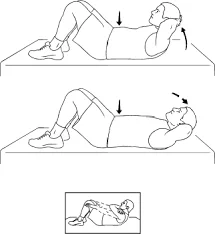
The rectus abdominis is worked through crunches or abdominal curls. It’s important to engage the muscles in the right position even if the movement isn’t very big.
Steps To Follow:
- With your feet hip-width apart and your knees bent, lie flat on your back
- Put the hands behind the head, keeping the elbows wide.
- Focus on tightening the abdominal muscles as you slide the ribs towards the pelvis.
- This movement will automatically raise the head and shoulders.
- Keep the head in a safe position by focusing the eyes on the knees.
- Return to the starting position by lowering.
- Do this 12–15 times. Increase to three sets.
Additional advice
An individual can also assist in correcting an anterior pelvic tilt by doing the following:
- Using a standing desk at work,
- Getting up frequently, and stretching after prolonged sitting
- Steer clear of high heels.
- Seeing a podiatrist about insoles or foot exercises
Symptoms
For the most part, anterior pelvic tilt is symptomless. If they do exhibit symptoms, they might observe:
- Tense muscles in the thighs and pelvis
- Weak stomach and gluteus maximus muscles
- Ill posture characterized by a bulging stomach and a curved lower spine
There is less evidence to support the theory that anterior pelvic tilt is the cause of lower back, hip, or knee discomfort, despite the fact these conditions are frequently reported as symptoms.
How does anterior pelvic tilt develop in humans?
Some persons experience muscular weakness or certain lifestyle choices that cause their muscles to tighten up.
An anterior pelvic tilt can occur for a variety of reasons, including:
- Spending a lot of time sitting down
- Riding
- Putting on high heels
- Flat feet
Complications
Lower backbones are under more pressure when there is an anterior pelvic tilt. In addition to other problems including muscle exhaustion, this pressure can result in:
- Muscles of the neck tense up
- Lower back discomfort
- Rotation of the hip and knee inward
- Knee and hip pain
- Hip flexor strain resulting in sciatica
A comprehensive treatment plan should be discussed with a physiotherapist or occupational therapist for individuals who have anterior pelvic tilt in addition to neck and lower back discomfort.
To improve the bad posture, it is essential to work on extending tight muscles and strengthening weak muscles, even if this condition is not causing any pain.
Anterior Pelvic Tilt Lifestyle Solutions
- Try these exercises, but if, after approximately a month, you don’t observe any improvement, you might want to look for additional guidance and supervision from a licensed physical therapist.
- See a doctor at away if you experience any neurological symptoms, including sciatica, shooting pain, tingling, numbness, or weakness.
- As with any posture-related issue, reducing anterior pelvic tilt and the associated pain necessitates a change in lifestyle and a greater awareness of one’s posture.
- If you want to regularly treat anterior pelvic tilt, make sure you maintain healthy daily routines.
- Setting aside time in your day to perform the aforementioned activities or adding them to a workout is a simple method to accomplish this. If you work at a desk all day, it can also be beneficial to create reminders in your calendar to get up and walk around. These minor adjustments can lead to a reduction in anterior pelvic tilt and back pain.
When to consult an expert
In children, teenagers, or younger adults, anterior pelvic tilt is a serious condition that requires consultation with a professional. Seeking assistance from a specialist is also advised for those who feel pain or discomfort, or who see that their pelvic tilt is getting worse.
Before starting any new fitness regimen, people should speak with their physician.
Conclusion
The entire body may be impacted by an anterior pelvic tilt, leading to pain or discomfort in other places. It is imperative that individuals determine their status prior to beginning anterior pelvic tilt exercises. Upon verification of their pelvic tilt, carrying out the specified activities could potentially alleviate symptoms.
FAQs
Are anterior pelvic tilt reversible by stretching?
The good news is that most exercises intended to strengthen weak muscles and stretch taut ones can effectively correct anterior pelvic tilt.
Which muscles in the anterior pelvic tilt are tense?
Pelvic Anterior Tilt
APT is characterized by a forward tilt of the pelvis, which causes the abdomen to protrude and the lumbar spine to assume a greater degree of lordosis (Suits, 2021). Numerous things, such as weak gluteal muscles, tight hip flexors, and bad posture, might contribute to it.
Is anterior pelvic tilt fixed with squats?
The Fix Anterior Tilt program aims to teach you how to do large motions without sacrificing form or injuring yourself. That’s why a decent program to help fight anterior pelvic tilt should include correct squats and deadlifting
What is the duration of time needed to correct anterior pelvic tilt?
Anterior pelvic tilt, which can result from prolonged sitting, is a frequent ailment that can strain the lower spine and make one appear overweight. Fortunately, the problem can be resolved with a short fitness regimen that takes 8 to 12 weeks to complete.
Does anterior pelvic tilt result from lying on your stomach?
For example, if you sleep on your stomach and your stomach sinks into the bed, tipping your lower back into lordosis – you are fostering an anterior tilt. Identify neutral pelvic positions and train your body to maintain them. In summary, sleeping on your stomach will exacerbate your anterior tilt, especially if you do it on a soft bed.
References
- Ginta, D. (2023, February 24). 5 Exercises for Anterior Pelvic Tilt. Healthline. https://www.healthline.com/health/fitness-exercise/anterior-pelvic-tilt-exercises
- Leonard, J. (2017, May 11). Six fixes for anterior pelvic tilt. https://www.medicalnewstoday.com/articles/317379#Symptoms
- Deering, S. (2021, June 24). How to Fix Anterior Pelvic Tilt. https://www.healthcentral.com/condition/back-pain/how-to-fix-anterior-pelvic-tilt
- Crichton-Stuart, C. (2023, July 24). Exercises to fix anterior pelvic tilt. https://www.medicalnewstoday.com/articles/322684

